Arrowroot is a grassy plant from the family of Moraine, the distinguishing feature of which is the bright patterns on the leaf plates. The decorative look requires attention, therefore the care of arrowroot at home is not simple, as it might seem at first glance.
Material Content:
Popular types of Maranta flower
The plant has several species and each of them is popular.
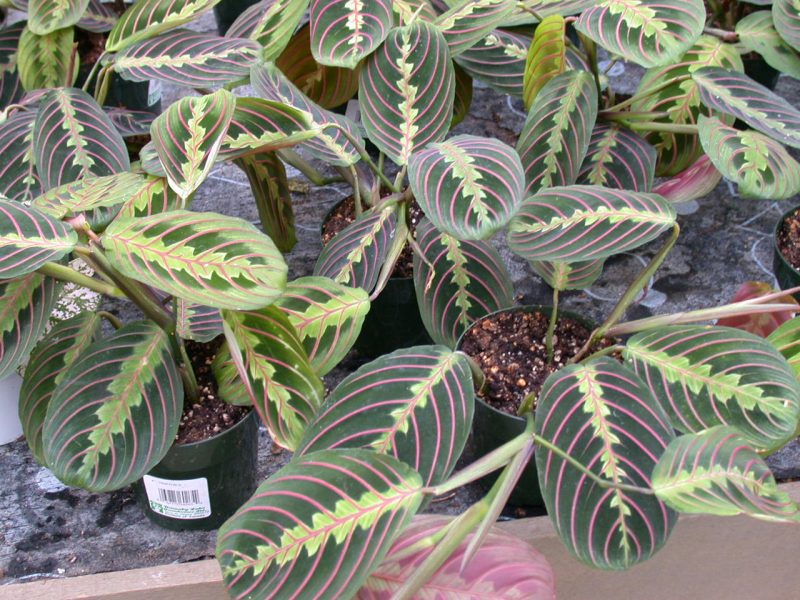
The most common:
- Reed Maranta - a plant of a species reaches a height of more than one meter. Its stems are elastic and erect. Leaves of interesting ovoid shape are painted in dark emerald color.
- Maranta two-tone - Each leaf of this species has bright green edges, and the inside is pink. Petiole has a light pink tint and is covered with fluff.
- Maranta tricolor - the most popular species, having three colors: the middle is dark pink, the veins are bright red, and the edges are painted in a light tone.
- White-winged arrowroot - the leaves resemble a heart in shape, has a dark green color with white veins.
Each of these species has both advantages and disadvantages, as well as certain growing rules.
It is interesting. In the evening, the plant picks up leaves, folding them together, the same thing happens a few hours before a thunderstorm.
Basic requirements for growing
To obtain a healthy and lush plant, it is necessary to observe all conditions when growing.

The basic rules include:
- bright place without bright sun;
- lack of drafts;
- spacious pot;
- appropriate humidity level in the room;
- regular watering;
- frequent spraying;
- the use of mineral fertilizers.
These are the basic requirements that will help to grow a healthy plant.
Choosing a place for a house arrow
To make the plant happy, you need to choose the right place.

It feels comfortable in the following conditions:
- optimal lighting, can withstand partial shade;
- arrowroot responds to neighboring plants, so it should provide a distance of at least 15 cm from other plants;
- air temperature should be constant, without fluctuations, not lower than 18 degrees.
Planting and transplanting plants
The flower is transplanted from March to April, until the plant begins to bloom.
Arrowroot refers to those plants that prefer moist and warm soil. Therefore, when transplanting, it is necessary to create the appropriate conditions. Arrowroot can be transplanted into the finished soil, after adding wood ash. Such soil reduces the risk of pathogens. You can buy the finished composition in the store, but it is easy to prepare it at home.
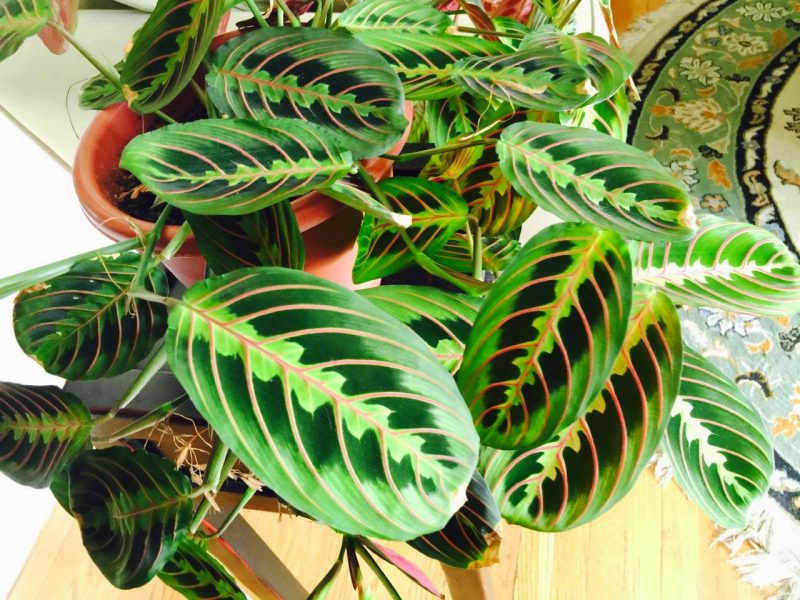
To prepare the substrate, you must take the following components:
- garden soil;
- turf soil;
- washed sand;
- humus;
- crushed coal;
- moss sphagnum.
The soil prepared through these ingredients will provide the plant with the necessary nutrition, preserve friability, letting air and moisture in.
The transplant process is carried out with the onset of heat in the spring. It is necessary to pay attention to the state of the root system: damage, rot is removed with a sharp knife. The removed and damaged roots are treated with carbon powder. After that, the plant is transplanted into the prepared soil, a drainage layer for excess moisture is preliminarily placed. In the first days of planting, it is better to keep the plant in greenhouse conditions, maintaining the temperature and humidity.
Home Care
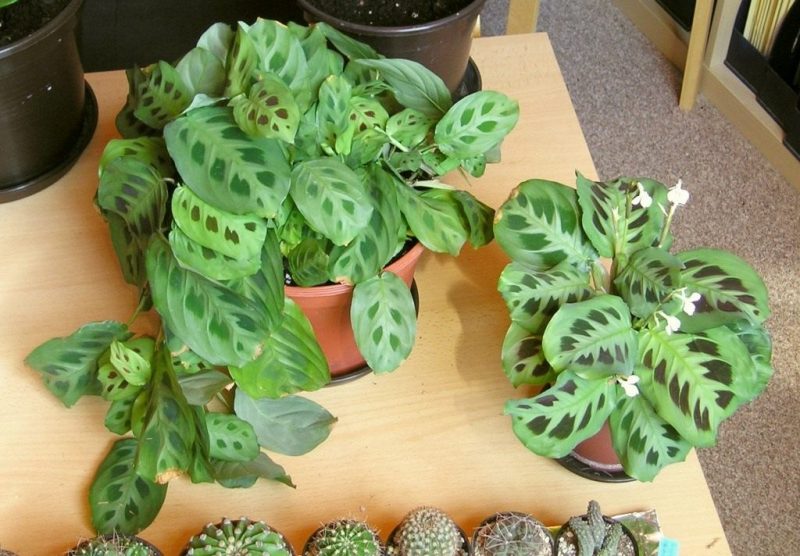
A perennial flower with a branching rhizome, where thickenings with a supply of water and nutrients are formed, refers to those plants that do not require special care. The flower will give a colorful tint if there is enough light in the room, but the bright sun should be avoided. In winter, it is necessary to provide additional light. Its lack will lead to a blanching of the sheet plate. To make the plant feel comfortable, the air temperature should not exceed 24 degrees. In the winter season, the temperature should not be below 18 degrees. Maranta prefers moist air. To do this, use moisturizers, often spray the plant. Before moisturizing, it is necessary to filter the water, as limescale may appear on the leaves. If the room is dry, the plant is installed on a pan filled with water with gravel.
The plant loves water, so it must be watered every four days, however, when the temperature drops, watering should be reduced to once a week. Lemon juice is sometimes added to water for irrigation. To make the plant healthy, it is fertilized with minerals, however, it is also not worth getting carried away with top dressing.
Every two years in the spring, the arrowroot is transplanted into another pot, which is filled with fresh soil. In early spring, they begin to prune the plants so that the leaves are lush.
Arrowroot propagation
To give an attractive appearance to the flower of arrowroot, you need to take care of its reproduction.
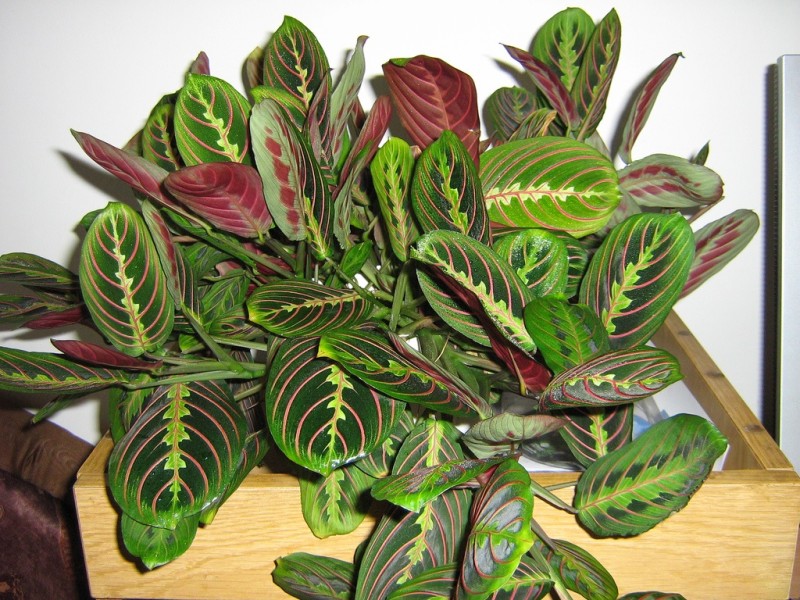
At home, the plant can be propagated:
- Rhizome division. In spring, the bush is divided by dividing the root into several parts. Dig a plant, remove soil, rinsing with water. Carefully inspect, and if rot is present, crop. Cut the root system so that in each part there are several nodules. Each part of the root must be treated with charcoal or root, and lightly dried, and then transferred to a nutrient substrate. Before planting, prepare the soil - it must be moistened.
- Sowing seeds. In early spring, they begin to sow seeds.Seeds are placed in a box with soil, sprinkled with a layer of peat, moistened and created in greenhouse conditions, covered with glass or film. Every day the greenhouse must be aired, opening for a while. After 10 days have passed, the first shoots begin to appear. Adhere to an air temperature of 19 degrees. As soon as leaves appear on the plant, it is necessary to place the shoots in separate containers for growing.
- Rooting cuttings - a shoot is cut off from an adult plant, on which at least 3 leaflets must be located. The procedure is performed from May to early September. The shoot should be in the water for a month. After the rhizome appears, the process of transplanting the plant into the soil should begin. To make it feel comfortable, it is necessary to lay a layer of peat on the soil, which will not only nourish the plant, but also maintain heat, and then cover it with a film. Cuttings need greenhouse conditions. Cuttings are especially popular as you don’t have to bother and spend time transplanting.
Which of these methods to choose, everyone decides on the basis of their preferences and capabilities.
Possible growing problems
In order not to lose the plant, it is important to know some of the problems you may encounter. The flower is damaged due to non-compliance with temperature and humidity.
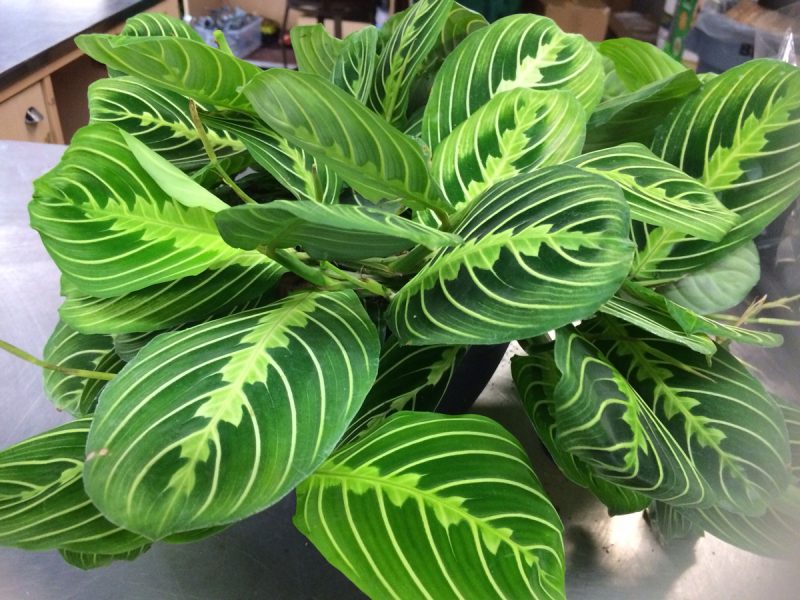
- For example, too dry air leads to the fact that the leaves begin to turn yellow, the ends become dry. In addition, this affects the growth of the plant.
- Humid air and moist soil cause decay on the leaves and root system.
- Avoid direct sunlight, since they destroy the leaf plates, which fade, begin to curl and fall off. In this case, the flower must be shaded.
Pests and diseases
The plant has several advantages, including resistance to various diseases and pests. In the event that the gardener observes the conditions for care, this can be avoided. Most often, it affects root rot, which occurs due to low temperatures and strong humidity. It is necessary to get rid of the disease using an antifungal agent that treats the surface of the soil. So that root rot does not spread and does not affect the entire plant, it is necessary to get rid of diseased areas of the plant.

The spider mite can hit the arrowroot if the air in the room is too dry. It is necessary to moisten the air, otherwise, the risk of punctures on the leaves of the plant increases. For effective struggle, many use special tools that are sold in stores. However, you can prepare solutions at home, for example, dissolve soap in warm water and treat the plant.












